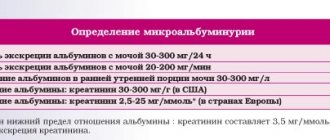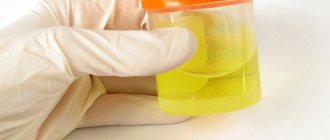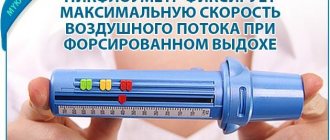A urethral smear is an analysis for a comprehensive assessment of the microflora of the genitourinary tract in men.
Consultation with a urologist
The genitourinary microflora includes dozens of species of bacteria, some of which are conditionally pathogenic organisms. During periods of weakened immunity, pathogens begin to actively multiply, affecting tissues and mucous membranes. Taking a smear from the urethra in men allows us to identify inflammatory processes, areas of accumulation of pus, pathogens of fungal, sexually transmitted, and viral diseases.
The Diana Clinic in St. Petersburg offers you to undergo a comprehensive diagnosis of the condition of the urological tract quickly and comfortably.
Indications
The content of the article
A urethral smear in men is recommended annually as a preventive measure. The following patient complaints become the reason for urgent analysis:
- pathologies of urination - pain, stinging, burning, urine output in small portions, frequent or very rare urge to go to the toilet;
- attacks of pain in the pelvic area and kidneys;
- impurities of blood, pus, mucus, curdled flakes in the urine;
- change in the color and odor of urine and ejaculate;
- rashes and hyperemia in the intimate area;
- swelling of the genitals, limbs, face;
- discomfort during sex;
- erectile disfunction;
- decreased sexual desire;
- impurities of unknown etiology in sperm;
- constant urogynecological problems in the partner.
Pain when urinating
Impurities in urine
Decreased desire
The study is also prescribed in preparation for conceiving a child, surgical interventions, to identify the causes of infertility. At the Diana clinic, they will carefully and painlessly take a smear from the urethra in men and help identify the cause of unpleasant symptoms.
What questions can a urologist ask during a consultation?
During the consultation, the doctor may ask the patient about the circumstances of the disease, its manifestations, and so on.
At the first consultation, the urologist may ask:
- How long ago did the disease begin?
- How does the disease manifest?
- Do you have problems with urination?
- What causes/increases symptoms?
- Does the patient suffer from any known diseases of the genitourinary system?
- Did your parents or close relatives (siblings) have similar diseases?
- Does the patient have chronic diseases of other organs and systems (heart, liver, etc.)?
- Does the patient have a regular sexual partner?
- What methods of contraception (protection) does the patient use?
- Has the patient suffered from sexually transmitted diseases?
- Does the patient have children?
- Is the patient taking narcotic drugs?
- Does the patient abuse alcohol?
- Does the patient smoke?
It is worth noting that the list of questions may differ significantly depending on which organ is affected and how severely it is affected.
Urethral smear in men: preparation
Taking a smear from the urethra in men requires careful preparation. Following the doctor’s recommendations ensures good quality biomaterial and reliable results.
Urologists recommend following the following preparation rules:
- within 3-4 days you need to maintain sexual rest (sex, masturbation);
- stop taking hormonal drugs, anesthetics, anti-inflammatory tablets, antibiotics 10-14 days before;
- within 2-3 days, stop drinking alcohol and reduce the number of cigarettes smoked;
- 2 days before the analysis, stop applying lubricants, intimate gels, ointments, antiseptics, etc. to the genital organ;
- hygiene procedures should be carried out the night before without the use of intimate detergents;
- The last urination should be 3 hours before taking the biomaterial (the most accurate results are obtained when taking the sample in the morning before the first urination).
To identify hidden infections, provocative preparation is often prescribed. For 3-5 days, the patient should actively visit saunas, consume junk food and alcoholic beverages. After such actions, examination of a smear from the urethra in men reveals the active reproduction of hidden viruses and bacteria.
Rules for preparing for sperm culture and spermogram
For culture, sperm can be collected at home. It is first necessary to carry out thorough hygiene of the external genitalia. Sperm is collected only after urination and in the morning. The material is collected in a container, which must be tightly closed immediately after collection. It is important that at least 5 days have passed since the last sexual intercourse. You cannot visit baths and saunas for 7 days.
For a spermogram, sperm obtained through masturbation is donated. Moreover, it is necessary to submit the material in the laboratory, since some indicators must be assessed in the first 30 minutes. Before the study, it is important to limit intimacy for at least 2, but no more than 5 days. For a week you need to eliminate going to the sauna and bathhouse and even heating the car seat, and for a week you need to give up smoking and alcohol.
How is a smear taken from the urethra in men?
The manipulation is carried out by a urologist in the morning. To collect biological material, the doctor can use a urethral probe, a bacteriological loop, a Volkmann spoon or a cotton swab. All instruments are sterile and are used only once.
Urethral probe
In the “standing” position, the patient exposes the genital organ. Using a sterile napkin, the doctor cleans the external opening of the urethra from mucus and secretions. Using an antiseptic, the skin of the genital organs is disinfected. The doctor inserts the instrument into the urethra to a depth of 2-4 centimeters and turns it in a circle. Rotation helps to collect the optimal amount of biomaterial for analysis. The instrument is removed, and the collected biocenosis is transferred to medical glass or placed in a nutrient medium.
When conducting a test for sexually transmitted infections, the collected microflora is placed in a sealed container with a special medium for further transportation to the laboratory.
How does an appointment with a urologist work for women?
Survey. The appointment begins with the woman being asked about any complaints. The doctor clarifies how long the woman has been bothered by certain symptoms and how much they affect the quality of life. Under some circumstances their presence is felt more strongly, and under what circumstances their severity, on the contrary, is less. After the interview, the woman is asked to lie down on a gynecological chair.
Inspection. During the examination, the doctor pays attention to the structure of the visible genital organs. Notes the presence or absence of redness, irritation, and various skin defects. A simple vaginal examination is often then performed to assess the condition of the genitals that can be seen. However, the urologist may not conduct such an examination, limiting himself to an external examination and taking samples.
Also, the doctor must palpate (feel) the area of the bladder and kidneys, assessing the patient’s reaction. The occurrence of pain in the pelvic area or in the lumbar region may indicate the presence of inflammatory processes and usually requires additional instrumental studies.
Urethral smear in men: does it hurt?
The procedure takes only a few minutes, but many men put off the examination due to the pain of the fence. A smear from the urethra in men is almost painless if the patient is healthy. That is, there is no inflammation, pus, or accumulation of pathogenic bacteria in the urethral area. In this case, the man experiences slight discomfort, and after the manipulation there may be mild pain and scanty bleeding when urinating.
If scraping is performed with pronounced symptoms of an infectious lesion, the patient experiences severe pain. These are unpleasant sensations, however, without taking a scraping it is impossible to determine the type of pathogen and prescribe adequate treatment. Pain after a urethral smear in men persists for several days and intensifies with each urination. Blood from the urethra after a smear in men for 3-5 days is also considered a normal condition. This is due to minor trauma to the inflamed mucous membrane during tissue collection.
To reduce pain, doctors recommend taking decoctions of medicinal herbs, avoiding fatty and fried foods, and alcohol. A warm bath with a solution of calendula, chamomile, and thyme will help relieve acute pain. If bleeding and pain do not go away on their own within 3-5 days, you should consult your doctor.
Decoction of medicinal herbs
Refusal of junk food
Is the patient experiencing pain?
Taking a smear is a rather unpleasant procedure, and the patient may experience pain. If the procedure is performed correctly, there should be no pain; the patient experiences tolerable discomfort that goes away within a few minutes. A burning sensation and itching, especially at the initial stage of urination, can persist for 2-3 hours. To relieve discomfort, doctors recommend drinking plenty of fluids and avoiding eating foods and drinks that irritate the urethra (spicy seasonings, smoked foods, alcohol, coffee).
Types of urological smears
A scraping from the urethra is carried out to assess the general condition of the microflora and identify the infectious process. Therefore, there are two types of urological smears:
- General urethral smear in men.
The study allows you to assess the condition of the genitourinary system. The biomaterial deposited on a glass slide is examined under a microscope. To identify pathogenic microorganisms, the smear is stained with various dyes and reagents. Microscopy of a smear from the urethra in men allows you to determine the number of leukocytes, epithelium, mucus, and identify bacteria, viruses, and fungi. But microscopic examination does not make it possible to accurately determine the type of pathogen; - Urethral swab in men using PCR method
. This type of diagnosis is carried out to determine the type of infection. PCR allows you to identify specific DNA characteristic of a particular microorganism. The technique allows you to diagnose chlamydia, gonorrhea, syphilis, gardnerellosis, genital herpes and other sexually transmitted infections. Also, a test for infection of a smear from the urethra in men is performed using the bacterial culture method. The biomaterial is transferred to a nutrient medium and the growth of the flora is observed for 10-14 days. Colonies of bacteria are examined under a microscope, their number and type of pathogen are determined using reagents.
Microscopic examination of a urethral smear in men takes 2-14 days, depending on the analysis method. The results of laboratory diagnostics are transferred to the attending physician or given to the patient.
Microscopic examination
In what cases is it necessary to see a urologist for men?
A visit to a urologist is necessary for men if one or more signs are present:
- Discharge from the urethra . The urethra is designed to remove urine and ejaculate; normally, this may also be a secretion produced by the urethral glands, but its quantity is so small that it is problematic to notice it. In other cases, we may be talking about the presence of diseases transmitted during intercourse, inflammation of the urethra, or prostate as a result of hypothermia. Discharge may indicate complicated pathology of other organs.
- Cutting in the urethra, burning and itching . Sometimes similar phenomena can be observed in a completely healthy man, which is caused by synthetic underwear, the use of coated condoms and lubricants, and the consumption of spiced dishes. However, such symptoms, occurring regularly and increasing over time, indicate the presence of pathology.
- Complete lack of libido or decreased libido.
- Pain in the testicles and perineum, near the anus and in the lumbar region . If there was no increased physical activity on the eve of the onset of symptoms, we can talk about urological problems.
- Impaired urination . It is evidenced by a weakening of the stream, the inability to relieve oneself at will, although it occurs pathologically often.
- Rashes and neoplasms on the penis . These signs most often occur against the background of pathologies transmitted through sexual contact without barrier contraceptives.
- Erectile dysfunction . This can manifest itself as ordinary fatigue, stress and lack of sleep, or the problem lies in hormonal imbalance, diseases of the vascular and genitourinary systems, and internal organs.
- Asthenovegetative syndrome . With chronic prostatitis, general weakness, deterioration in performance, irritability, insomnia, increased sweating and increased heart rate often develop.
- Changed color of urine , presence of purulent and bloody inclusions in it or ejaculate.
- Lack of children in marriage with a full sex life.
Urethral smear in men: explanation
The interpretation of the analysis of a smear from the urethra in men is carried out by the attending physician according to the following indicators:
- leukocytes
– exceeding the normative indicators of leukocyte concentration indicates inflammation (urethritis, prostatitis); - red blood cells
– completely absent in a healthy person; - epithelium
– an increased amount is observed in infectious diseases; - mucus
- excessive concentration is characteristic of the development of inflammatory foci; - lactobacilli
- the microflora should normally be populated by Dederlein bacilli in large quantities; - key cells
– normally absent from the biomaterial; - cocci
– normally present in single quantities; - trichomonas
- present in the smear only when the patient is infected; - yeast fungi
- exceeding standard values indicates the development of a fungal infection; - gonococci
- fixation of this microorganism in a scraping is possible only when infected with gonorrhea; - gardnerella
- observed when infected with gardnerella; - staphylococci and streptococci
are present in the field of view in minimal quantities, and an increase in indicators occurs with inflammation, abscess, and venereal diseases.
A scraping examination for infection may contain a list of other types of pathogens (genital herpes, cytomegalovirus, chlamydia). The list of infections is determined by the doctor depending on the nature of the patient’s complaints and the results of other studies.
Control tests after treatment
After a course of therapy, the doctor prescribes a repeat examination of the urethral smear.
This is often necessary.
The doctor must make sure that the man is completely healthy.
It is better to take a control smear after completing a course of antibacterial therapy.
The optimal period is two weeks.
Why re-test after treatment?
It is imperative to do this procedure.
It is important to make sure that the pathogen is completely removed from the body, and the drug was selected correctly.
If you do not take a urethral smear after a course of antibiotics, the likelihood of developing chronic inflammation increases.
The infectious agent often remains in the body.
Moreover, the bacteria becomes resistant to the drug.
After this, the doctor needs to select the drug again.
Treatment will be longer and more expensive.
To prevent this situation, it is imperative to re-examine the urethral contents.
Features of taking a smear for prostatitis
To obtain the necessary material for research, a urologist performs a finger massage of the prostate through the anus. During the massage, the prostate gland secretes a secretion that exits through the urethra. The doctor analyzes this liquid.
No special preparation is required before submitting prostate secretions for analysis. In cases where it is not possible to obtain a secretion, the doctor collects the first portion of urine into a container. It contains a high concentration of secretion.
The results obtained during the study show whether there are any deviations from the norm and how much they exceed acceptable values.
Analysis transcript
Only a urologist can interpret the tests. A study carried out microscopically establishes:
- Leukocytes. A normal indicator is the presence of leukocytes not exceeding five. If the indicators exceed the norm, then inflammation occurs. The higher the indicator, the more serious and problematic the disease. Basically, such indicators are given by diseases such as prostatitis and urethritis. Treatment of such diseases is prescribed immediately.
- Epithelial cells. It is considered normal when the number of cells does not exceed ten. If the norm is significantly exceeded, treatment is prescribed as the inflammatory process occurs. Urethritis can be diagnosed, as well as the presence of formations (tumors), benign or malignant formations.
- Slime. The norm is to have a minimum quantity. If the indicators are greatly exceeded, then an inflammatory process is occurring.
- Bacteria. Bacteria classified as opportunistic can always be present in the human body without causing harm to health. If the presence of the total number of bacteria is significantly increased, then urethritis is occurring.
- Microorganisms. They are the causative agents of many diseases transmitted exclusively through sexual contact. Such diseases include: chlamydia, gonococcus, ureaplasmosis, etc. If a man is healthy, then such bacteria are absent. If a small amount is detected, it means the infectious disease has just begun or is ending. If the amount is significantly exceeded, then the disease has developed greatly and requires urgent treatment. For such diseases, treatment is prescribed to both partners.










